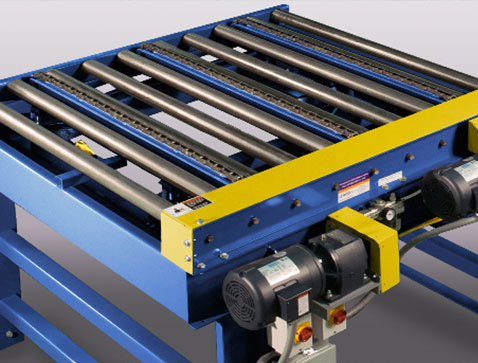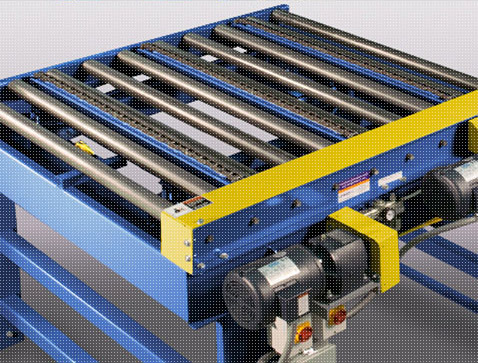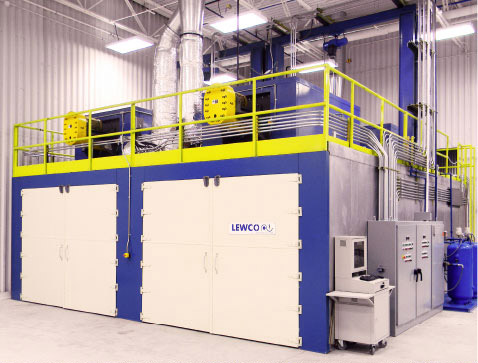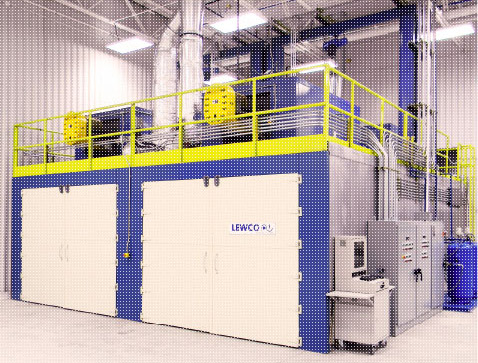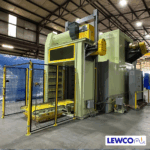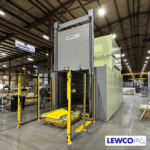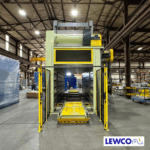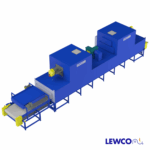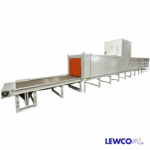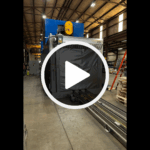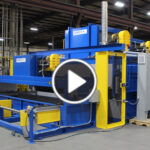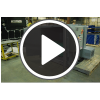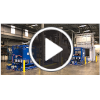TYPES OF OVENS
Batch Ovens are a type of industrial oven used for thermal processing. They can be used for a wide variety of heat processes including drying, curing, aging, annealing, stress relieving, bonding, tempering, preheating, and forming. Batch ovens are essentially heated boxes with insulated doors that process products one at a time or in groups (“batches”). The part(s) to be heated are brought into the oven in batches on racks, carts, or trucks. Production requirements can accommodate manual or automated loading.
Continuous Ovens offer labor savings and material handling efficiency over typical batch processes. Conveyors can be overhead, belt, powered roller, chain or slat. Continuous process is inherently higher throughput. Continuous oven can include multiple zones operating at different temperatures.
TYPES OF HEAT TRANSFER
Conduction
- Heat transfer by short range interaction of molecules/electrons
- Direct Contact
- Example: Drum Heating Cabinet without fan
Convection
- Heat transfer by combined mechanisms of fluid mixing and conduction
- Most industrial ovens employ forced air convection
Radiation
- Heat transfer through electromagnetic waves
- Does not heat space that waves pass through
- Only suitable for heating work of consistent geometry
COMMON INDUSTRY TERMS
Auto-Ignition Temperature: The lowest temperature at which a substance will spontaneously ignite in a normal atmosphere.
Flash Point: The temperature at which a particular organic compound gives off sufficient vapor to ignite in air. An ignition source is required to ignite the compound.
BTU (British Thermal Unit): is a traditional unit of energy equal to about 1055 joules. It is the amount of energy needed to cool or heat one pound of water by one degree Fahrenheit.
Direct Gas Fired: A heating system where the products of combustion are circulated throughout the oven workspace. The gas burner fires directly into the heater box and re-circulated air stream.
Indirect Gas Fired: A heating system where the products of combustion are NOT circulated throughout the oven workspace. Instead, the gas burner fires into a heat exchanger that is in the re-circulated air stream.
Heat Transfer: is the process whereby heat moves from one substance to another. In this process energy is in transit due to a temperature difference. Heat always flows from a higher temperature/ higher energy object to a cooler temperature/ lower energy object. Temperature gradient (difference) is the driving force behind this. The higher the gradient, the faster the heat-up time.
Heat Treatment: A combination of heating and cooling operations applied to a metal or alloy in the solid state to obtain desired conditions or properties. Heating for the sole purpose of hot working is excluded from the meaning of this definition.
LEL (lower explosive limit): The minimum concentration (%) of a flammable gas by which it is considered explosive.
Process Heating: is utilized to achieve a change in a material’s properties or state. It involves a combination of heating at various times and temperatures.
Purge: An interval of time prior to turning on a Class A or fuel-fired oven when exhaust fan(s) are energized in order to remove flammable vapors from the oven.
Ramp: The interval of time in the heating cycle when temperature is rising to the desired set point
Soak (or “dwell time”): The interval of time in the heating cycle when the work is held at temperature.
Temperature Uniformity: is a measure of temperature consistency, as sampled at various locations inside an oven or furnace. Critical heating applications will specify a maximum temperature variance (e.g. + or – 10°F). SAE’s specification, AMS 2750E, covers requirements for temperature uniformity surveys.
Thermocouple: a thermoelectric device for measuring temperature, consisting of two wires of different metals connected at two points, and a voltage being developed between the two junctions in proportion to the temperature difference.
APPLICATIONS
Aging: Describes a change in the properties of certain alloys, which is dependent on time and temperature. It is used to increase the strength of an alloy. Except for the case of strain aging and age softening, it is the result of precipitation from a solid solution of one or more compounds whose solubility decreases with decreasing temperature.
Annealing: A heat treatment generally used to soften by heating to and holding at suitable temperature followed by cooling at a controlled rate.
Baking: Heating an object or material to a low temperature in order to remove entrained gases
Brazing: to form, fix, or join by soldering with an alloy of copper and zinc at high temperature.
Curing: General term for a process by which a material is caused to form permanent molecular links caused by exposure to chemicals, heat, or pressure
Drying: A heat treatment to remove water or other liquid from a material or object
Normalizing: A process in which an iron-base alloy is heated to a temperature above the transformation range and subsequently cooled in still air at room temperature
Preheating: A treatment employed prior to another process to improve throughput or to promote slower cooling of the object or material.
Stress Relieving: A heat treatment process used to reduce internal residual stresses in an object or material by heating to a suitable temperature and holding it at that temperature for a certain period of time.
Tempering: A heat treatment process generally used to lower hardness and improve toughness (reduce brittleness) in a hardened steel. Also referred to as “drawing.”

